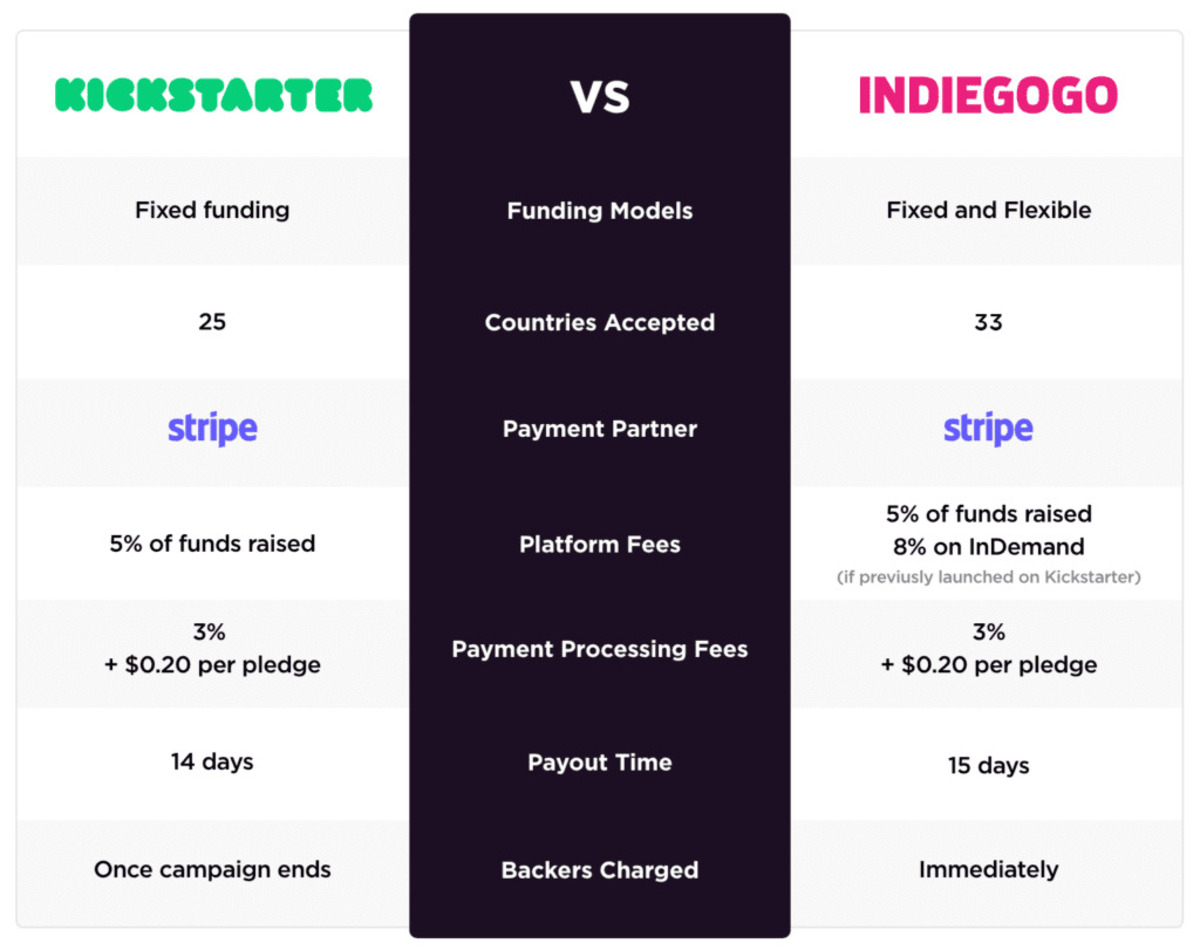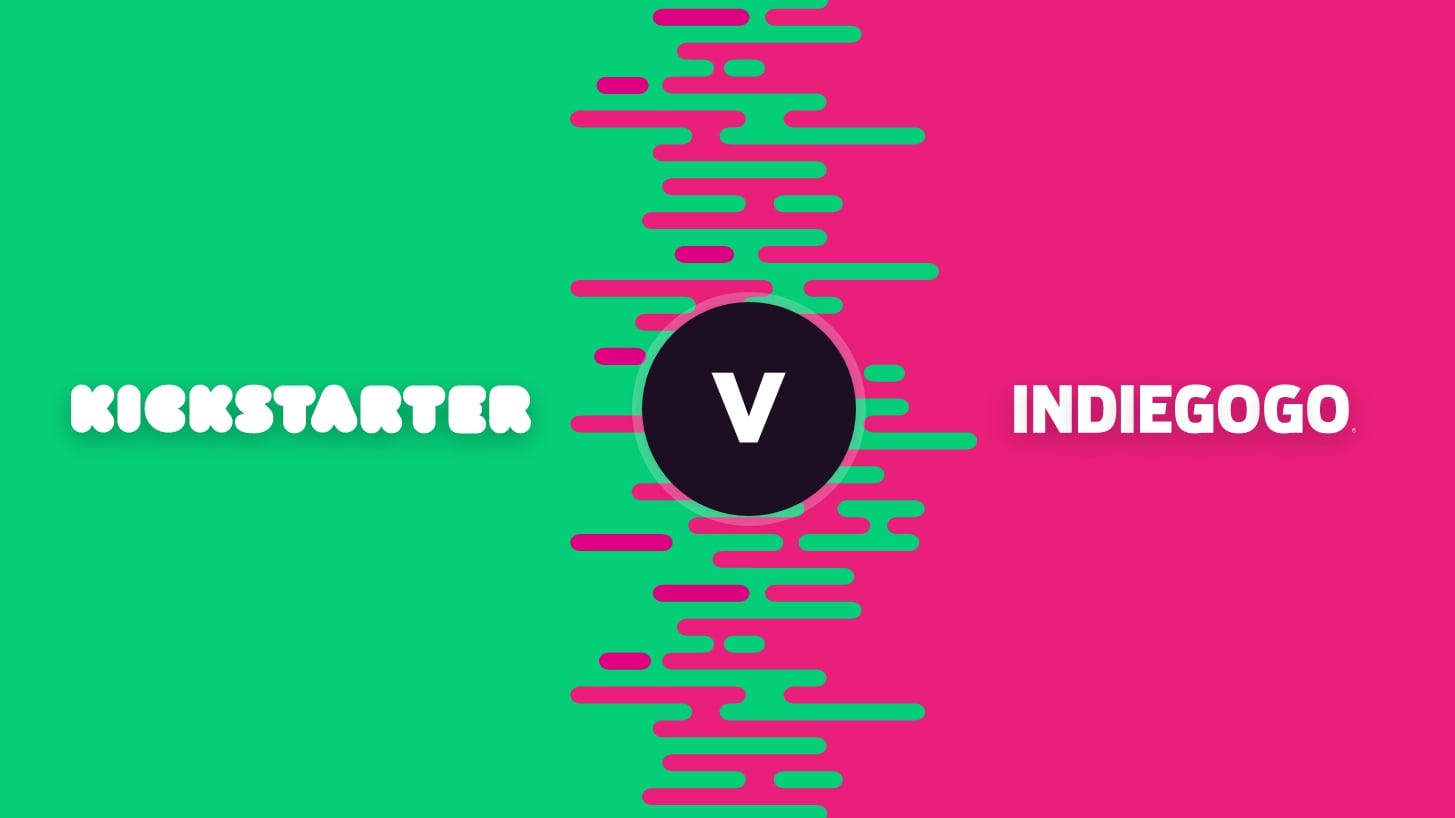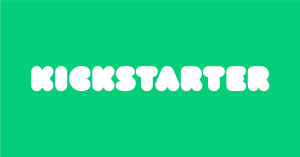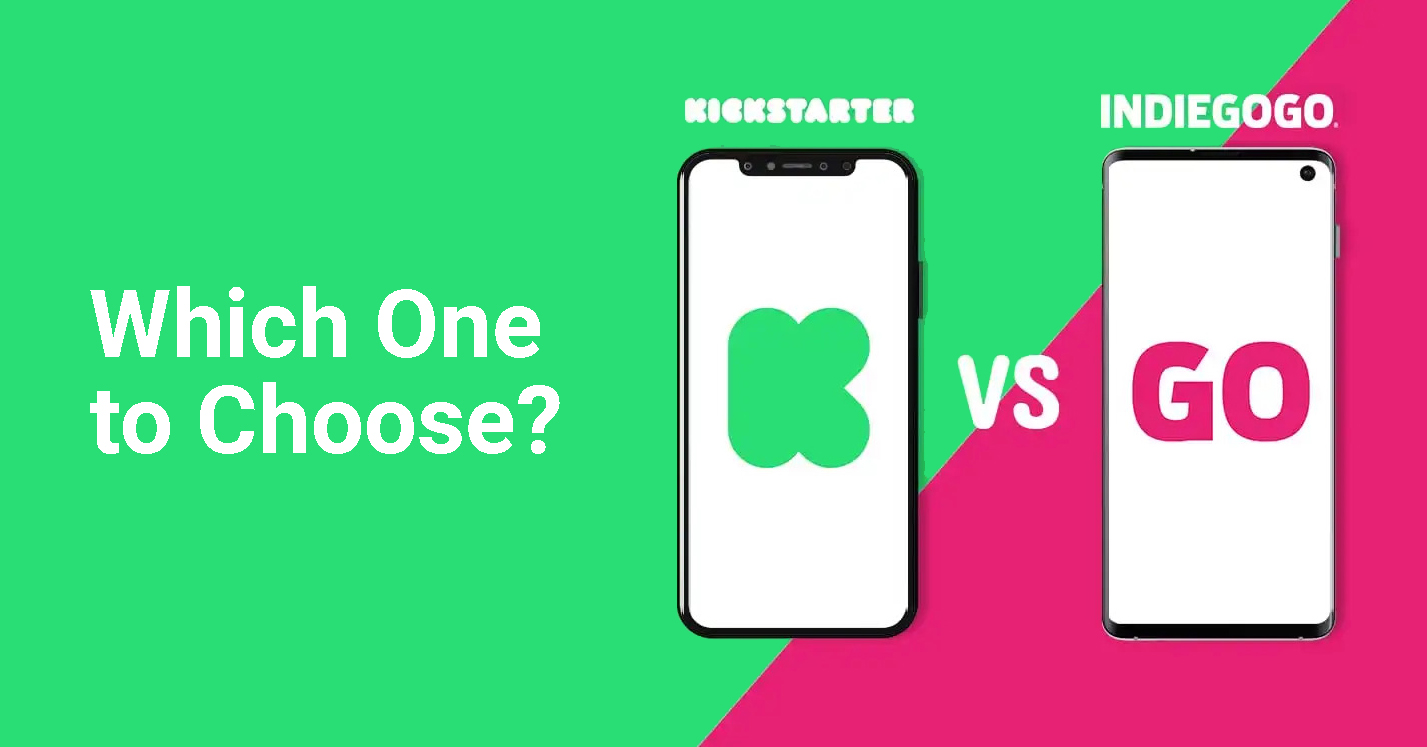Introduction
Crowdfunding has revolutionized the way independent game developers can fund their projects and bring their visions to life. With platforms like Kickstarter and Indiegogo, creators now have a direct line to their audience, enabling them to secure financial support and build a community around their games. However, when it comes to choosing the right crowdfunding platform, many developers find themselves torn between Kickstarter and Indiegogo.
In this article, we will delve into the advantages and disadvantages of both Kickstarter and Indiegogo when it comes to crowdfunding games. By exploring the features and success stories of each platform, we aim to provide game developers with the insights they need to make an informed decision.
Whether you’re a seasoned developer or an aspiring game creator, understanding the differences between Kickstarter and Indiegogo can help you navigate the crowdfunding landscape effectively. From funding goals and timelines to campaign visibility and backer engagement, every aspect plays a crucial role in the success of your crowdfunding campaign.
In the following sections, we will provide an overview of crowdfunding for games, followed by a deep dive into Kickstarter and Indiegogo. We will discuss the advantages and disadvantages of each platform, focusing on factors like campaign visibility, backer engagement, and fundraising flexibility. Finally, we will examine case studies of successful games that have utilized Kickstarter and Indiegogo for crowdfunding.
By the end of this article, you should have a clear understanding of the similarities and differences between Kickstarter and Indiegogo and feel empowered to choose the right platform for your game crowdfunding campaign. Let’s dive in!
Overview of Crowdfunding for Games
Crowdfunding has emerged as a game-changer for independent game developers, providing them with a platform to seek financial support from a community of passionate gamers. Instead of relying solely on traditional funding methods such as investors or publishers, developers can now turn to crowdfunding to bring their game ideas to life.
One of the primary advantages of crowdfunding for games is that it allows developers to maintain creative control over their projects. By bypassing traditional funding routes, developers can avoid potential compromises on their artistic vision imposed by external stakeholders. This freedom to create the game they truly envision is a significant driving force behind the popularity of crowdfunding in the gaming industry.
Moreover, crowdfunding also offers developers a unique opportunity to engage with their potential player base from the very beginning. By involving the community in the development process, developers can receive valuable feedback, build a loyal following, and create a sense of ownership among backers. This direct interaction with backers leads to a stronger connection and can help in generating greater support and excitement for the game.
When it comes to crowdfunding for games, two major platforms stand out: Kickstarter and Indiegogo. Both platforms have played a crucial role in launching successful games and have their own strengths and weaknesses.
It’s important to note that crowdfunding is not just about securing financial support but also about building a community of loyal fans and supporters. Developers must carefully consider the platform that aligns with their campaign goals, target audience, and project requirements. In the following sections, we will explore Kickstarter and Indiegogo in detail, discussing their advantages and disadvantages for crowdfunding games.
Now that we have a general understanding of crowdfunding for games, let’s dive deeper into the specific features and capabilities of Kickstarter and Indiegogo.
What is Kickstarter?
Kickstarter is one of the most popular crowdfunding platforms, known for its focus on creative projects, including games. Launched in 2009, Kickstarter has helped thousands of game developers turn their ideas into reality.
At its core, Kickstarter is a platform that allows creators to showcase their projects and set a funding goal. Instead of traditional investors, creators rely on individual backers who pledge financial support in exchange for various rewards. These rewards can range from early access to the game, exclusive merchandise, or even a mention in the game’s credits.
Kickstarter operates on an “all-or-nothing” funding model. If a project fails to reach its funding goal within the specified timeframe, the backers’ pledges are not charged, and the project receives no funds. This model provides a sense of urgency and motivation for both creators and backers, ensuring that only projects with sufficient interest and support receive funding.
One of the key advantages of Kickstarter is its large user base and extensive reach. The platform boasts millions of users, including a significant number of dedicated gamers. This broad audience can significantly increase the visibility and potential funding opportunities for game developers.
Kickstarter also offers a robust set of tools and features to help creators run successful campaigns. From customizable project pages to integrated social sharing and backer management systems, Kickstarter provides a user-friendly and comprehensive platform for game developers to showcase their projects.
However, Kickstarter does have its limitations. For instance, the platform is only available in a limited number of countries, which may limit the audience reach for some developers. Additionally, Kickstarter has specific guidelines and restrictions on the types of projects that can be crowdfunded, ensuring a focus on creative endeavors.
In the next section, we will explore the advantages and disadvantages of Kickstarter for crowdfunding games, helping developers make an informed decision when considering this platform for their projects.
Advantages of Kickstarter for Crowdfunding Games
Kickstarter offers several advantages for game developers looking to crowdfund their projects. These advantages contribute to the platform’s popularity among creators and backers alike. Let’s explore some of the key advantages of using Kickstarter for crowdfunding games:
- Large and Engaged Community: Kickstarter boasts a massive user base, including a significant number of dedicated gamers. This community of backers is already enthusiastic about supporting creative projects and games, providing developers with a built-in audience that is more likely to engage with and back their projects.
- Visibility and Exposure: With millions of users actively browsing Kickstarter, game projects have the potential to gain significant exposure. Kickstarter showcases recently launched projects and provides various discovery tools, making it easier for potential backers to stumble upon games and contribute their support. Additionally, successful projects may receive additional exposure through Kickstarter’s promotional efforts.
- Flexible Funding Goals: Kickstarter allows creators to set their funding goals based on the specific needs of their projects. This flexibility is particularly advantageous for game developers, as they can accurately estimate the required funds for development, marketing, and other related expenses. With Indiegogo, creators must choose between a flexible funding or fixed funding model, limiting their control over funding goals.
- Community Building Opportunities: Kickstarter encourages creators to actively engage with their backers throughout the campaign. The platform provides communication tools and updates, allowing developers to involve their community in the development process, gather feedback, and build a loyal fan base. This sense of community can result in long-term support for the game beyond the crowdfunding campaign.
- Easy Payment Processing: Kickstarter takes care of payment processing, making it easy for backers to contribute their pledges. This streamlined payment system eliminates the need for developers to set up their payment gateways and ensures a secure and hassle-free experience for both the creators and backers.
These advantages make Kickstarter an attractive platform for game developers looking to crowdfund their projects. However, it’s essential to consider the potential drawbacks, which we will discuss in the next section, to make a well-informed decision.
Disadvantages of Kickstarter for Crowdfunding Games
While Kickstarter offers numerous benefits for crowdfunding games, it also has its share of disadvantages that developers should consider before choosing this platform for their campaigns. Let’s explore some of the key disadvantages of using Kickstarter for crowdfunding games:
- All-or-Nothing Funding Model: One of the main drawbacks of Kickstarter is its “all-or-nothing” funding model. If a project fails to reach its funding goal within the specified time frame, the creator receives no funds, and the backers’ pledges are not charged. This can be a significant risk for developers, as they may invest a significant amount of time and effort into a campaign that ultimately falls short of its goal.
- Strict Project Guidelines: Kickstarter has specific guidelines and restrictions on the types of projects that can be crowdfunded. This focus on creative endeavors means that certain game projects, such as mature or controversial content, may not meet the platform’s criteria. Developers must ensure their projects align with Kickstarter’s guidelines before launching their campaigns.
- Platform Fees: Kickstarter charges a 5% platform fee on all successfully funded projects, in addition to payment processing fees. While this fee is relatively standard among crowdfunding platforms, it is still an additional expense that developers must consider when determining their funding goals.
- Less International Reach: Kickstarter is primarily available in specific countries, which may limit the potential audience reach for developers in regions where the platform is not accessible. This can impact the overall exposure and funding opportunities for game projects seeking a global audience.
- Increased Competition: With its large user base and popularity, Kickstarter attracts a high number of projects seeking funding. This increased competition means that game developers must put extra effort into standing out from the crowd and capturing the attention of potential backers. It can be challenging to generate sufficient interest among backers, especially when there are numerous other game projects vying for their attention.
While these disadvantages should be considered, they should not discourage developers from exploring Kickstarter as a crowdfunding platform. Each project’s unique needs and goals will determine whether the advantages outweigh the drawbacks. In the next section, we will shift our focus to Indiegogo, another popular crowdfunding platform, and discuss its advantages for game developers.
What is Indiegogo?
Indiegogo is a well-known crowdfunding platform that provides creators with the tools and resources to bring their ideas to life. Established in 2008, Indiegogo has gained popularity as a platform that supports a wide range of projects, including games.
Similar to Kickstarter, Indiegogo allows creators to showcase their projects and set funding goals. However, Indiegogo offers creators more flexibility when it comes to funding models. Creators can choose between a flexible funding model, where they keep the funds raised regardless of whether they reach their goal, or a fixed funding model, where they only receive funds if they meet or exceed their target.
An advantage of Indiegogo is its global reach. Unlike Kickstarter, which has limitations on countries, Indiegogo is accessible to creators from around the world. This broader reach opens up opportunities for game developers to tap into a more diverse and international backer audience.
Indiegogo also provides creators with various tools and features to support their crowdfunding campaigns. This includes customizable project pages, social media integration, advanced analytics, and campaign management tools. Additionally, Indiegogo offers additional services and support for creators through its partnership programs, such as marketing and manufacturing assistance.
One notable feature of Indiegogo is its emphasis on innovation. The platform has a dedicated category called “Indiegogo InDemand” that allows successful campaigns to continue accepting contributions even after the initial funding period has ended. This ongoing funding capability enables developers to continue raising funds for additional game features or expansions, helping them further build and improve their projects.
While Indiegogo offers several benefits for game developers, it’s important to consider the potential drawbacks as well. In the next sections, we will explore the advantages and disadvantages of using Indiegogo for crowdfunding games, helping developers make an informed decision when considering this platform for their projects.
Advantages of Indiegogo for Crowdfunding Games
Indiegogo offers numerous advantages for game developers looking to crowdfund their projects. These advantages contribute to the platform’s appeal and make it a viable option for creators. Let’s explore some of the key advantages of using Indiegogo for crowdfunding games:
- Flexible Funding Models: Indiegogo provides creators with the option to choose between flexible and fixed funding models. This flexibility allows game developers to decide whether they want to receive funds regardless of meeting their funding goal (flexible), or only receive funds if they reach a specific target (fixed). This flexibility can be advantageous for developers who want to proceed with their project even if they don’t meet their funding goal.
- Global Audience Reach: Unlike Kickstarter, Indiegogo has a broader reach, accessible to creators from around the world. This global audience reach opens up opportunities for game developers to tap into a more diverse and international backer audience. This can help in generating more interest and expanding the potential supporter base for their games.
- Additional Funding Opportunities: Indiegogo offers the “Indiegogo InDemand” feature allowing successful campaigns to continue accepting contributions even after the initial funding period. This ongoing funding capability enables developers to raise additional funds for game features, expansions, or other project enhancements, enhancing the overall value and scope of their games.
- Additional Support and Services: Indiegogo provides creators with additional support through its partnership programs. This includes marketing assistance, manufacturing guidance, and access to expert resources. These services can help game developers to better plan and execute their campaigns, improving their chances of success.
- Flexible Project Guidelines: Indiegogo has relatively flexible project guidelines compared to Kickstarter. This means that game projects with mature or controversial content may find a home on Indiegogo, provided they comply with legal requirements and community standards. This flexibility opens up more possibilities for game developers seeking to create unique and unconventional gaming experiences.
These advantages demonstrate Indiegogo’s potential as a crowdfunding platform for game developers. However, it’s crucial to consider the potential drawbacks as well, which we will discuss in the next section, in order to make an informed decision.
Disadvantages of Indiegogo for Crowdfunding Games
While Indiegogo offers several benefits for crowdfunding games, it is important for developers to be aware of the potential drawbacks before choosing this platform for their campaigns. Let’s explore some of the key disadvantages of using Indiegogo for crowdfunding games:
- Lesser User Base Compared to Kickstarter: Indiegogo, although popular, has a smaller user base compared to Kickstarter. This means that game projects on Indiegogo may have a smaller pool of potential backers and may require additional marketing efforts to reach a broader audience. Achieving visibility and generating sufficient interest among backers can be more challenging on Indiegogo.
- Less Visibility and Exposure: While Indiegogo has a global reach, it may not have the same level of visibility and exposure as Kickstarter. Kickstarter’s larger user base and platform features result in a higher likelihood of projects being discovered by potential backers. Developers on Indiegogo will need to invest extra effort in promoting their campaigns and driving traffic to their project pages to garner adequate support.
- Lesser Emphasis on Gaming Projects: Indiegogo is known for supporting a wide range of projects across various categories, including technology, film, and design. Consequently, the platform may not have the same level of gamer-centric focus as Kickstarter. This means that game projects on Indiegogo may have to work harder to attract the attention of passionate gaming enthusiasts specifically.
- Platform Fees: Indiegogo charges a 5% platform fee on all funds raised, similar to Kickstarter. In addition, there are payment processing fees to consider. These fees can impact the overall budget and funding goals of game developers. It is important to factor in these expenses when setting the funding target for a campaign.
- Less Emphasis on All-or-Nothing Funding: While Kickstarter adheres to an “all-or-nothing” funding model, Indiegogo provides flexibility in funding by allowing creators to choose a flexible or fixed funding model. While this flexibility can be advantageous, it may also lead to a slightly higher risk of incomplete projects or less commitment from backers, as the sense of urgency to reach the funding goal may be reduced.
Considering these potential disadvantages, game developers should carefully evaluate their project requirements and priorities when deciding whether to use Indiegogo as their crowdfunding platform. In the next section, we will explore key factors that developers should consider when choosing between Kickstarter and Indiegogo.
Factors to Consider When Choosing Between Kickstarter and Indiegogo
Choosing the right crowdfunding platform is a crucial decision for game developers. Kickstarter and Indiegogo both offer unique advantages and disadvantages, making it important to consider several key factors when deciding which platform to use. Let’s explore the factors that developers should consider when choosing between Kickstarter and Indiegogo:
- Project Goals and Funding Needs: Assess the specific goals and funding requirements of your game project. Consider the funding model that aligns best with your project’s needs. Kickstarter’s “all-or-nothing” approach may be suitable if you require a specific funding threshold to proceed, while Indiegogo’s flexible model may be preferred if you can move forward with any level of funding.
- Target Audience and User Base: Evaluate your target audience and determine which platform has a user base that aligns with your project. Kickstarter offers a larger user base, especially among dedicated gamers, while Indiegogo has a more diverse user base that extends beyond gaming. Consider which platform can provide the visibility and engagement you need to attract the right backers.
- Project Guidelines and Restrictions: Review the project guidelines and restrictions of each platform. Kickstarter has more stringent guidelines, focusing primarily on creative projects, while Indiegogo offers more flexibility in project categories. Choose the platform that allows you to showcase your game without any restrictions, ensuring it meets your vision and desired content.
- Geographic Reach: Consider the geographic reach of each platform. Kickstarter is available in limited countries, which may impact your ability to reach a global audience. In contrast, Indiegogo has a broader international reach, enabling you to target backers from around the world. Evaluate where the majority of your target audience resides and choose the platform that can offer the desired audience reach.
- Platform Fees and Funding Flexibility: Evaluate the fees associated with each platform, including the platform fee and payment processing fees. Consider how these fees may impact your overall budget and funding goals. Additionally, assess the funding flexibility offered by each platform – Kickstarter’s “all-or-nothing” model versus Indiegogo’s flexible and fixed funding options.
By carefully considering these factors, game developers can make an informed decision about which crowdfunding platform – Kickstarter or Indiegogo – aligns best with their project’s goals, target audience, and funding needs. It’s crucial to weigh the advantages and disadvantages of each platform and choose the one that provides the best opportunity for successfully crowdfunding your game.
Case Studies: Successful Games Crowdfunded on Kickstarter
Several games have found tremendous success in crowdfunding their projects through Kickstarter. Let’s take a look at a few notable case studies that highlight the power and potential of Kickstarter as a crowdfunding platform for games:
- “Undertale” by Toby Fox: “Undertale” is a critically acclaimed indie game that was crowdfunded on Kickstarter in 2013. The game’s unique storytelling, memorable characters, and innovative gameplay mechanics resonated with backers. The campaign exceeded its funding goal and went on to gain widespread recognition, winning numerous awards and selling millions of copies.
- “Shovel Knight” by Yacht Club Games: Another standout success story is “Shovel Knight,” a 2D side-scrolling platformer funded on Kickstarter in 2013. The game’s nostalgic graphics, tight controls, and challenging gameplay captured the attention of backers. The campaign not only reached its funding goal but also achieved stretch goals, allowing the developers to add additional features and content to the game. “Shovel Knight” received critical acclaim and became a commercial success, paving the way for future expansions and sequels.
- “Pillars of Eternity” by Obsidian Entertainment: “Pillars of Eternity” is a modern-day classic RPG that raised over $4 million through Kickstarter in 2012. The game revived the isometric RPG genre, drawing inspiration from influential games like “Baldur’s Gate” and “Planescape: Torment.” The campaign attracted a large number of backers who were eager to support the development of a deep and story-driven RPG. The success of “Pillars of Eternity” led to a sequel and showcased the demand for classic RPG experiences among the gaming community.
These case studies highlight the ability of Kickstarter to propel game projects to success by generating enthusiasm and financial support from a dedicated community. They demonstrate that a well-crafted campaign, clear communication, and a compelling vision can lead to extraordinary results on Kickstarter.
It’s important to note that these successes do not guarantee the same outcome for every game project on Kickstarter. Each campaign’s success depends on various factors, including the quality of the game, effective marketing strategies, and community engagement. Thorough planning and execution are essential to maximize the chances of success on the platform.
In the next section, we will explore case studies of games that found success through crowdfunding on Indiegogo, providing insights into the platform’s potential for game developers.
Case Studies: Successful Games Crowdfunded on Indiegogo
Indiegogo has also seen its fair share of successful game projects that have achieved their crowdfunding goals and gone on to become notable successes in the gaming industry. Let’s explore a few case studies that demonstrate the potential of Indiegogo as a platform for crowdfunding games:
- “Superhot: The Card Game” by Board & Dice: “Superhot: The Card Game” is a tabletop adaptation of the popular first-person shooter video game. The project was successfully funded on Indiegogo in 2017. The campaign offered backers an opportunity to experience the unique time-bending gameplay mechanics of “Superhot” in a card game format. The campaign’s success allowed the creators to bring their vision to life and offer fans a fresh gameplay experience in a different medium.
- “Amplitude” by Harmonix Music Systems: Harmonix Music Systems, known for their work on popular music-based games, crowdfunded a reimagination of their classic game “Amplitude” on Indiegogo in 2014. The campaign aimed to bring back the beloved rhythm game with enhanced graphics, new music, and additional features. The community rallied behind the project, surpassing its funding goal and allowing Harmonix to deliver an updated version of “Amplitude” that received positive reviews from players and critics alike.
- “Warhorse Studios” by Kingdom Come: Deliverance: “Kingdom Come: Deliverance” is a highly immersive open-world RPG set in medieval Bohemia. The game was funded through a combination of Kickstarter and Indiegogo in 2014. The campaign attracted a significant amount of support from backers on both platforms who were eager to experience a realistic and historically accurate RPG. The success of the campaign enabled Warhorse Studios to create a game that garnered critical acclaim for its engaging storytelling, stunning visuals, and immersive gameplay.
These case studies demonstrate that Indiegogo has served as a successful platform for game developers across various genres. Through crowdfunding, these projects were able to secure the necessary financial support and engage with a dedicated community of backers.
However, it is important to note that the success of these specific projects does not guarantee the same results for every game on Indiegogo. Each campaign’s success relies on numerous factors, including the appeal of the game concept, effective marketing strategies, and community engagement. Thorough planning and execution are crucial in maximizing the chances of success on this platform.
Having explored successful games funded through both Kickstarter and Indiegogo, we can now move on to the concluding section for a final assessment of these two crowdfunding platforms.
Conclusion
Choosing the right crowdfunding platform is vital for game developers looking to fund their projects and build a dedicated community of backers. Kickstarter and Indiegogo are two prominent platforms that offer unique advantages and disadvantages. Both have played a key role in the success of various game projects, attracting passionate backers and providing opportunities for developers to bring their visions to life.
Kickstarter is known for its large user base, extensive reach, and focused community of dedicated gamers. It offers a compelling platform and a sense of urgency with its “all-or-nothing” funding model. The robust set of tools and features provided by Kickstarter empowers developers to showcase their projects effectively and engage with their backers throughout the campaign.
On the other hand, Indiegogo offers a more flexible funding model, a broader international reach, and additional support services for creators. This platform accommodates a wide range of projects and provides creators with options to choose between flexible and fixed funding, allowing them to adapt to specific project needs.
Successful game projects on Kickstarter, such as “Undertale,” “Shovel Knight,” and “Pillars of Eternity,” exemplify the platform’s potential to generate enthusiasm and financial support from a dedicated community. Likewise, Indiegogo has seen success stories like “Superhot: The Card Game,” “Amplitude,” and “Kingdom Come: Deliverance,” showcasing the platform’s ability to fund creative and innovative game projects.
When deciding between Kickstarter and Indiegogo, developers should consider several factors, including their project goals, target audience, geographic reach, funding needs, and the platform’s guidelines and restrictions. It is crucial to assess which platform aligns best with the project’s specific requirements and offers the greatest potential for success.
Ultimately, the choice between Kickstarter and Indiegogo depends on the developer’s unique circumstances and project goals. Both platforms have proven track records in crowdfunding games, but careful consideration of the advantages and disadvantages of each can lead to a better decision and maximize the chances of a successful crowdfunding campaign.
Whichever platform developers choose, it’s important to plan and execute their campaigns diligently, engage with the community, and deliver on the promises made to backers. With the right approach, crowdfunding can not only provide the necessary financial support but also create dedicated fan bases, foster community engagement, and catapult game projects to success.

























